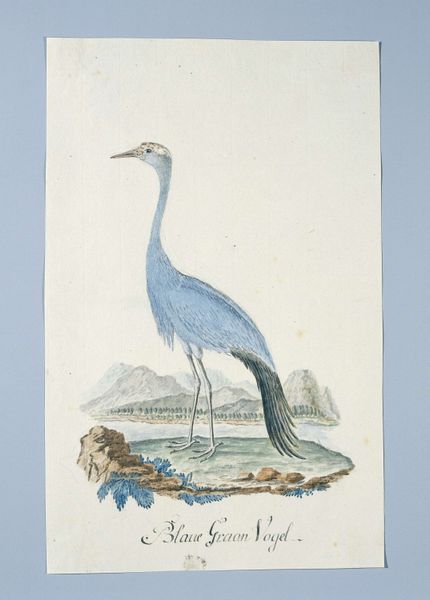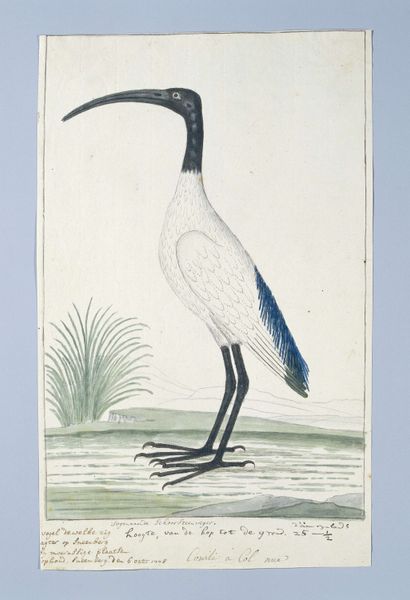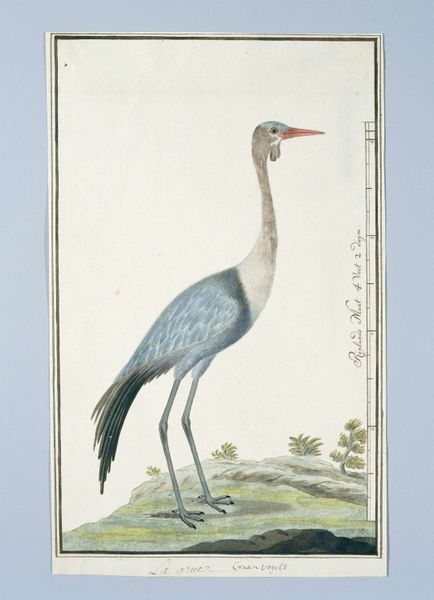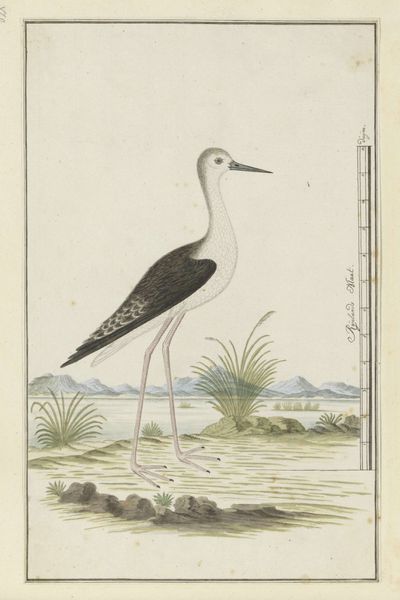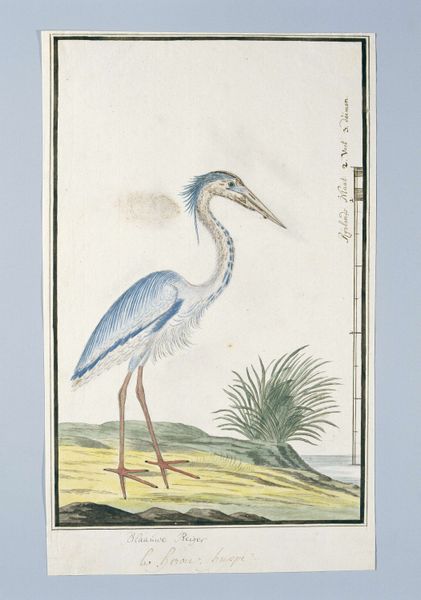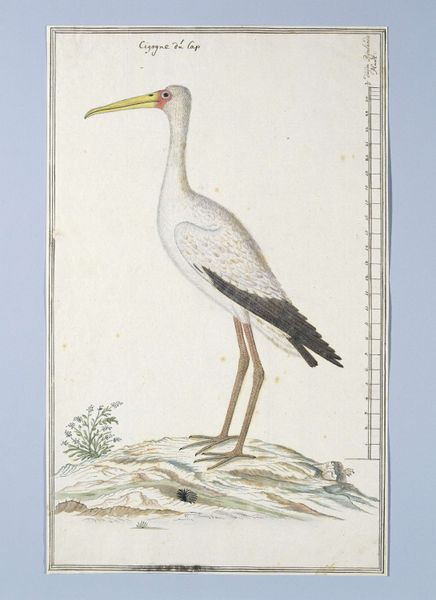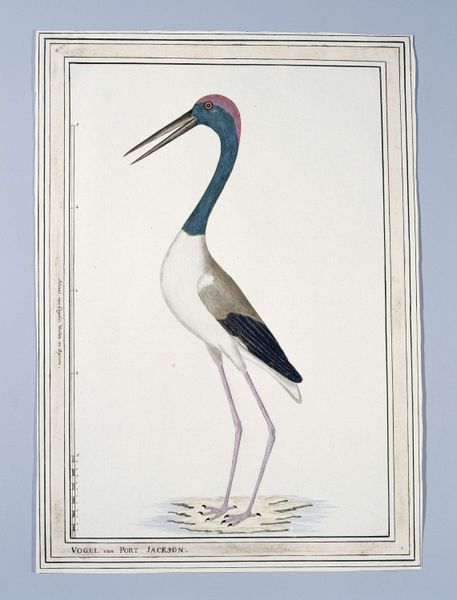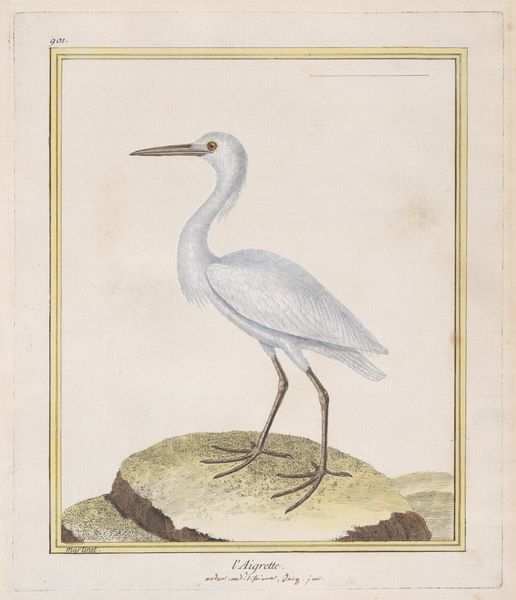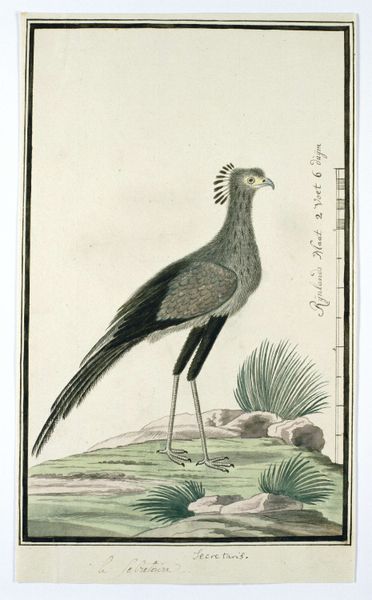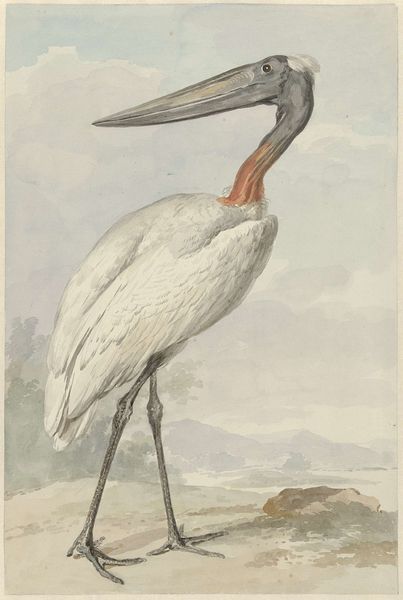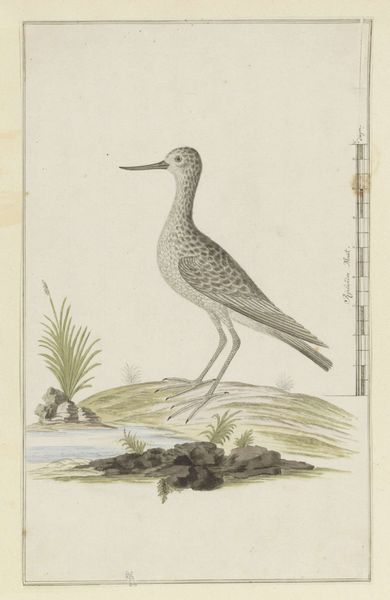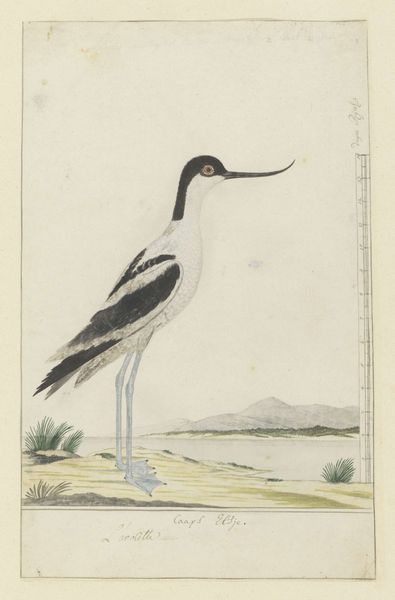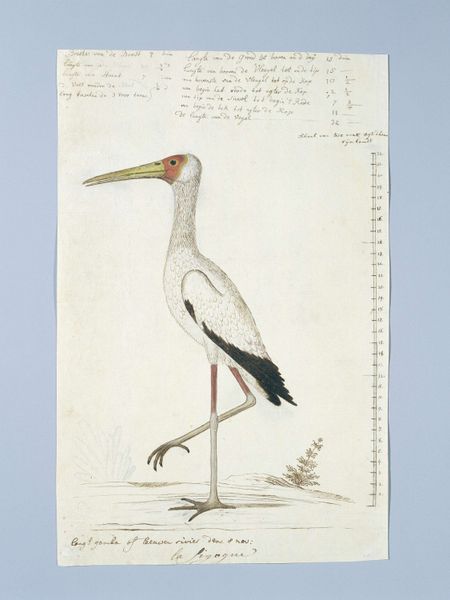
Dimensions: height 660 mm, width 480 mm, height 400 mm, width 277 mm, height 330 mm, width 239 mm
Copyright: Rijks Museum: Open Domain
Here we see a watercolor and pen illustration of an Anthropoides paradisea, or Blue Crane, created by Robert Jacob Gordon. Gordon was a Dutch explorer, military officer, and artist of Scottish descent, active in the late 18th century. His role as commander of the Dutch Cape Colony placed him in a complex position within a colonial context. This image of the Blue Crane offers more than a mere naturalistic depiction. It reflects the cultural and scientific interests of the time, when Europeans were attempting to document and classify the natural world, often through a lens shaped by colonial power dynamics. The crane, with its elegant posture and distinct coloration, stands as a symbol of the exotic "other" encountered by Europeans in Africa. How might the artist's position as a colonial figure have influenced his perception and representation of the natural world? What does it mean to classify and contain nature through art, and how does this relate to broader themes of exploration and exploitation?
Comments
No comments
Be the first to comment and join the conversation on the ultimate creative platform.
